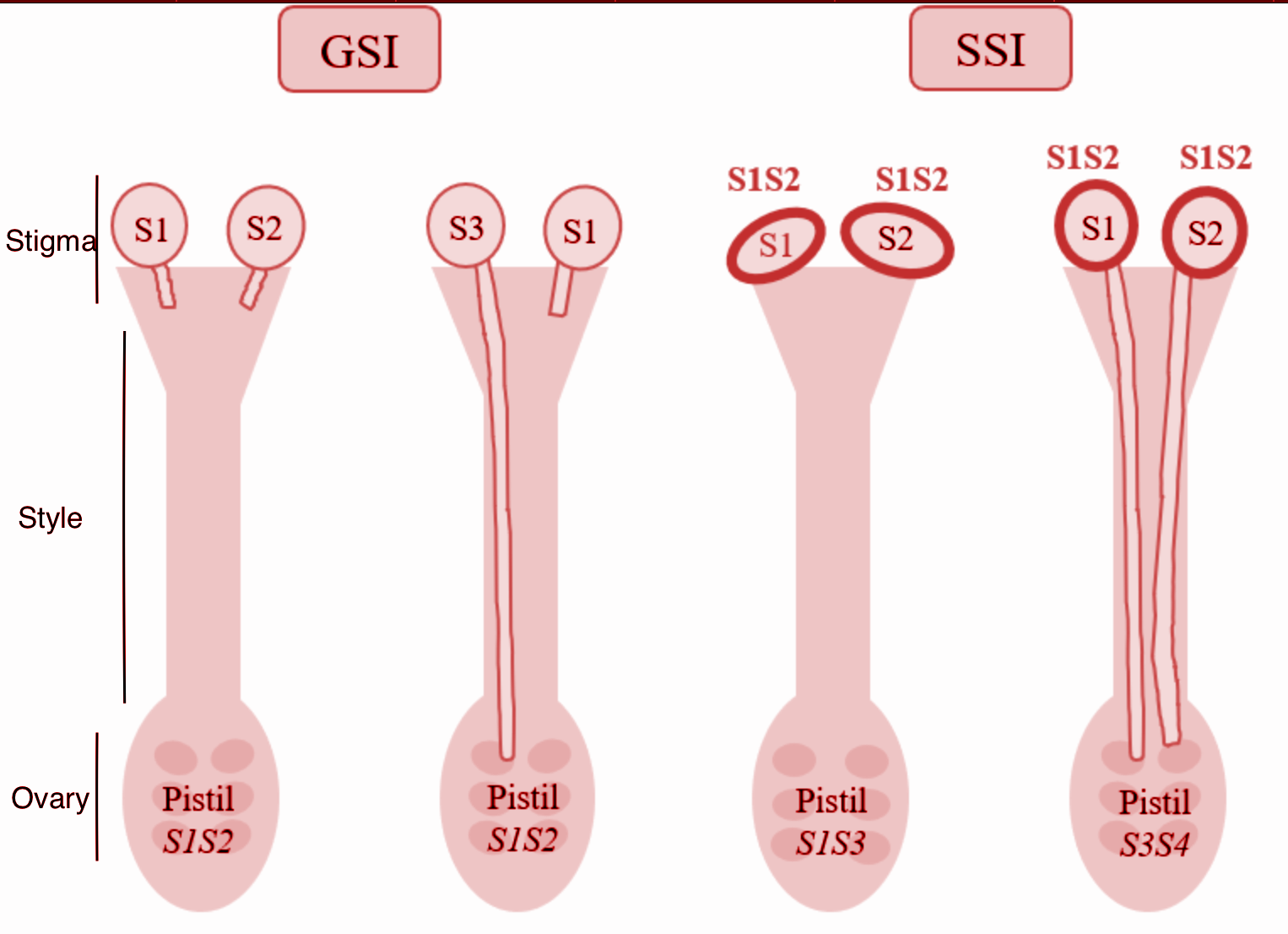Question
Question: Assertion: self-incompatibility is a genetic mechanism that prevents self- pollination and thereby f...
Assertion: self-incompatibility is a genetic mechanism that prevents self- pollination and thereby fertilization by inhibiting either pollen germination or pollen tube growth in the pistil.
Reason: In gametophytic self- incompatibility, the incompatibility reaction is determined by the genotype of the saprophytic tissue of the plant from which the pollen is derived.
(a) Both the assertion and the reason are correct and the reason is the correct explanation for the assertion.
(b) Both the assertion and the reason are correct but the reason is not the correct explanation for the assertion.
(c) The assertion is correct but the reason is not incorrect.
(d) Both assertion and reason are incorrect.
Solution
Self-Incompatibility prevents Inbreeding in Flowering Plants. Genetic diversity is important for maintaining the health and survival of species. By selecting their traits of interest humans often unwittingly reduce genetic diversity in domesticated crops and animals. The self-incompatibility system comprises the recognition of self-related pollen by cells of the pistil which is followed by rejection of the incompatible pollen.
Complete step by step answer:
The mechanism of self-incompatibility (SI) prevents self-fertilization and thus encourages outcross and allogamy which shouldn’t be confused with genetically controlled physical or temporal mechanisms (prevent self-pollination), such as heterostyly and sequential hermaphroditism (dichogamy) . In plants with SI, when a pollen grain produced in a plant reaches a stigma of the same plant or another plant with a matching allele or genotype, the process of germination of pollens, pollen tube growth, ovule fertilization, and embryo development is halted at one of its stages and consequently, no seeds are produced. To prevent inbreeding and promote the generation of new genotypes in plants, SI is one of the most important mechanisms which is considered as one of the causes for the spread and success of angiosperms on the earth.
Depending on the origin of factors determining the mating types two categories of self-incompatibility have been recognized.
(i) Gametophytic self-incompatibility (GSI). The incompatibility process is determined by the genotype of the male gametophyte (pollen) itself, e.g., Liliaceae, Poaceae, Solanaceae.
(ii) Sporophytic self-incompatibility (SSI). The incompatibility process is controlled by the genotype of the sporophytic tissue of the plant from which the pollen is derived, e.g., Asteraceae, Brassicaceae.

So, the correct answer is, ‘Assertion is correct but the reason is incorrect’.
Note: The mechanism, self-Incompatibility is very important in plant breeding so that self-incompatibility effectively prevents self-pollination; as a result, it has a profound effect on plant breeding approaches and objectives.
(1) In the production of hybrid seeds, self-incompatibility is used. For that, two self-incompatible but cross-compatible lines are to be interpolated; seeds obtained from both the lines would be a hybrid seed.
(2) Without emasculation and without resorting to genetic or cytoplasmic male sterility, self-incompatibility provides a way for hybrid seed production.
(3) The combining of desirable genes in a single genotype from two or more different sources through natural cross-pollination is allowed by the self-incompatibility system which is not possible in self-compatible species.
(4) In the case of pineapple, commercial clones are self- incompatible which results in their fruits developing parthenocarpic ally & are seedless.
